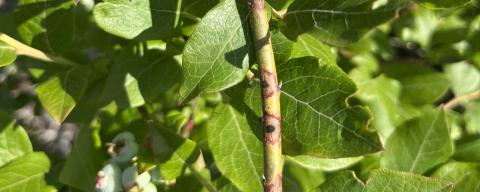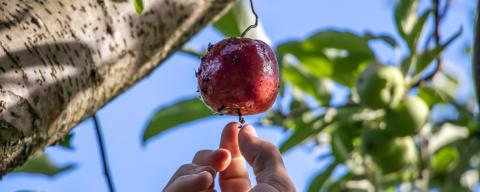By Bo Liu, Director of the UNH Plant Diagnostic Lab and State Extension Specialist, Plant Pathology, and Tyler Edwards, Plant Pathology Program Lab Manager of the UNH Plant Diagnostic Lab
Published September 2024
Gibbera twig blight primarily affects blueberries in the northeastern U.S. and eastern Canada. Gibbera is known to be in Merrimack, Sullivan, Cheshire and Grafton counties of New Hampshire. This disease will affect fruit yield; affected twigs are more prone to winter damage, and severe cases can cause the twigs to die when the fungus forms cankers that cut off their nutrients. Heavily infected twigs are often killed when fruiting bodies form girdling cankers.
Symptoms
The key symptoms for identification are black, raised, cushion-shaped fruiting bodies (stromata) on twigs and canes. Stromata can occur singly or in clusters and are usually bordered by a distinct red margin (Fig. 1, 2, 3, and 4).
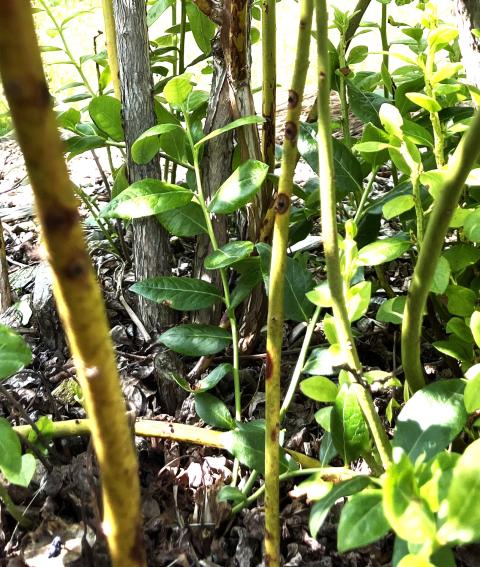
Fig. 2: Gibbera twig blight starts with the fungus surviving winter in the black bumps on infected twigs and canes.
Causal agent
Gibbera twig blight is caused by the Ascomycotes fungus Gibbera vacciniifolia.
Life cycle
The disease cycle starts with the fungus surviving winter in the black bumps on infected twigs and canes. During rainy periods from mid-April to late June, with peak spore release in May, the fungus spreads and infects new growth. The first signs of the disease are tiny black bumps that appear on one-year-old twigs in early fall.
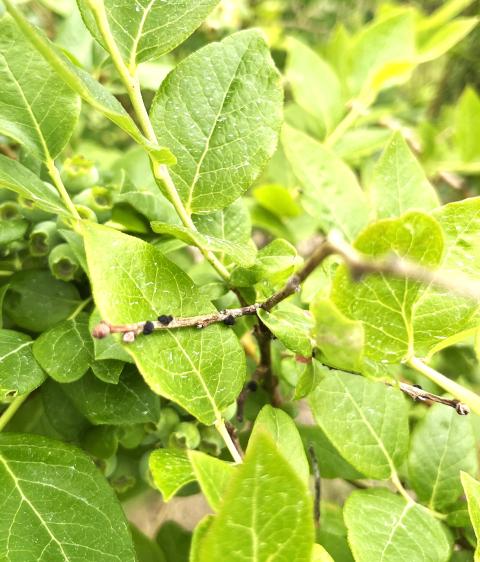
Fig. 3 Key symptoms for Gibbera twig blight include black, raised, cushion-shaped fruiting bodies (stromata) on twigs and canes.
Management
Remove and destroy infected twigs and canes to reduce the chances of spreading. Planting resistant varieties can also help. Blueberry varieties like Berkeley and Herbert are prone to this disease, and Northland is highly susceptible. Applying fungicides before blooming starts can be effective in preventing new infections. Good cultural practices, like pruning for better air circulation, help keep the plants dry and less susceptible to the fungus.
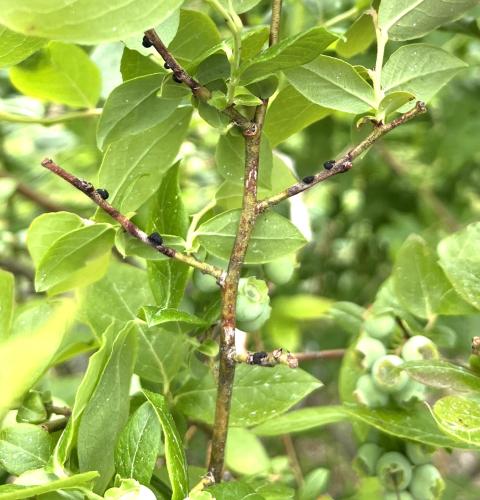
Fig. 4: Key symptoms for Gibbera twig blight include black, raised, cushion-shaped fruiting bodies (stromata) on twigs and canes.
Extension Services & Tools That Help NH Farmers Grow
Newsletters: Choose from our many newsletters for production agriculture
Receive Pest Text Alerts - Text UNHIPM to (866) 645-7010
